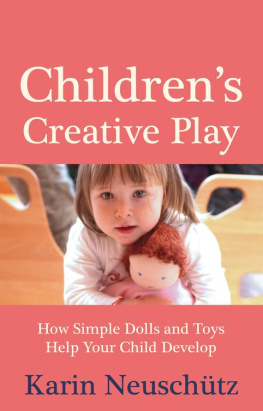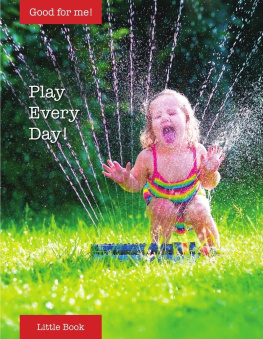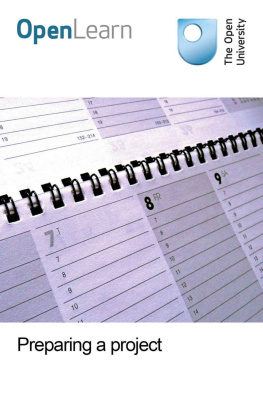
Published by Redleaf Press
10 Yorkton Court
St. Paul, MN 55117
www.redleafpress.org
2017 by Rosanne Regan Hansel
All rights reserved. Unless otherwise noted on a specific page, no portion of this publication may be reproduced or transmitted in any form or by any means, electronic or mechanical, including photocopying, recording, or capturing on any information storage and retrieval system, without permission in writing from the publisher, except by a reviewer, who may quote brief passages in a critical article or review to be printed in a magazine or newspaper, or electronically transmitted on radio, television, or the Internet.
First edition 2017
Cover design by Erin Kirk New
Cover photograph by Gillham Studios
Interior design by Percolator
Typeset in Sentinel
Library of Congress Cataloging-in-Publication Data
Names: Hansel, Rosanne Regan, author.
Title: Creative block play / Rosanne Regan Hansel.
Description: First edition. | St. Paul, MN: Redleaf Press, [2016] | Includes bibliographical references and index.
Identifiers: LCCN 2016013821 (print) | LCCN 2016026309 (ebook) | ISBN 9781605544465 (ebook)
Subjects: LCSH: Block building (Childrens activity) | Early childhood education.
Classification: LCC LB1139.C7 H36 2016 (print) | LCC LB1139.C7 (ebook) | DDC 371.33/7--dc23
LC record available at https://lccn.loc.gov/2016013821
To my familyDave, Amber, Andy, Jenn, Emily, Jeff, and Dagan
for teaching me so much about what it means to love, laugh,
accept, create, and build.
Table of Contents
Guide
Contents
My lifes work has been shaped by memorable encounters with a number of remarkable people, many of whom you will become more familiar with in these pages. First and foremost, I thank the administrators, teachers, and children from the public schools of New Jersey who made this book possible. I have been genuinely inspired by kindergarten and preschool teachers Kathleen Spadola and Nicole Dennis from Paterson, New Jersey; kindergarten teacher Krista Crumrine from Union City School District; preschool teacher Marianne Cane from Englewood School District; master teachers Virginia Sacchi and Mary Ann Sanguinito from Phillipsburg School District; master teacher Sally Kacar and preschool teacher Arlene Calafut (now retired) from New Brunswick School District; and Principal Bonita Samuels and her teachers from the School District of South OrangeMaplewood. They have demonstrated that creative block play is entirely compatible with a standards-based curriculum and performance-based assessment. In addition to public preschools in New Jersey, the college childrens centers at Kean University and William Paterson University offer early childhood students the opportunity to gain experience in high-quality classrooms. My deepest thanks to Sonja de Groot Kim and Cindy Gennarelli for their careful documentation of block play in those centers.
The Quakers (or Friends) began educating women and people of color in the United States long before education was considered a right. The work of Quaker educators helped me understand that the role of education is to help all children find their unique voice and to use that voice, or special ability, to contribute something of value to the world in order to make it a better place for all to live. As a preschool director at Abington Friends School, I had the privilege of hiring an outstanding young lady, Tamara Clark (now at the Parent Infant Center in Philadelphia), and years later, of hearing her present with her colleagues at a NAEYC conference on the topic of their newly built outdoor classroom. Tamara generously contributed photos of childrens indoor and outdoor explorations with blocks and other construction materials to this book. These photos and inspiration from Rusty Keelers book Natural Playscapes highlight the importance of outdoor learning, which I believe children need more than ever today.
Visiting the world-renowned schools of Reggio Emilia, Italy, and meeting Loris Malaguzzi, Carlina Rinaldi, Lella Gandini, Amelia Gambetti, and the Reggio teachers was a life-changing experience for me. Thank you Tracy Keyes and Judy Leigh, for being eager travelers with me on this inspirational journey. I have devoured every article, book, video, and exhibit about this creative educational approach and have traveled far and wide to see Reggio-inspired schools in the United States. After spending an enlightening day at the Boulder Journey School in Boulder, Colorado, several years ago, I invited Alison Maher and her teachers to contribute documentation on block play for this book, and I was delighted that they accepted. More recently, during a tour of the Universal Studios Child Care Center managed by Bright Horizons in Los Angeles, California, with Program Coordinator Janette Deddio, I was struck by their breathtakingly beautiful outdoor classrooms and building materials. Many thanks to Janette and Program Director Jennifer West for allowing me to include photos from their extraordinary center in this book.
Margie Carter and Deb Curtis may never know the influence they have had on me as an administrator of early childhood programs, a provider of professional development, an adviser on early childhood environments, and a shaper of early childhood policy. Their workshops, videos, and books have had a powerful impact on my work, which you will see throughout this book. Margie led a study tour of early childhood programs in Auckland, New Zealand, where I was reminded that it is entirely possible to put children, families, and joyful learning at the center of early childhood education and at the same time offer the highest-quality learning experiences for young children. Margie Carter and Deb Curtiss Designs for Living and Learning has become an invaluable resource in my presentations on classroom environments.
When I was the lone art educator working in an elementary school many years ago, the National Art Education Association conferences kept me inspired. It was at one of these conferences that I first attended a workshop by Cathy Weisman Topal and discovered her books. Cathys Beautiful Stuff! Learning with Found Materials remains a favorite in my workshops with kindergarten teachers and was the inspiration for Katie Spadolas exploration with found materials in this book. Katie has been instrumental in providing insight and feedback on the content of this book so that it will be a practical and useful guide for teachers. Working with Katie these past few years has given me renewed hope in the next generation of educators and leaders in the early childhood field. I am so grateful to Katie for her energy and determination to be a positive role model for teachers through the examples she shares in this book and in her presentations.
My entrance to the world of science and math occurred when I was hired as the early childhood specialist for the Math Science Partnership (MSP) at Rutgers University, funded by the National Science Foundation. I am forever grateful for having had the opportunity to train with the authors of the Young Scientist Series on Building Structures with Young Children, Jeffrey Winokur, Karen Worth, and Ingrid Chalufour, and to learn from the MSP science specialist, Hector Lopez, and Jorie Quinn, director of the early childhood programs at the Liberty Science Center at that time. This experience expanded my understanding of the extraordinary connections among science, technology, engineering, art, and mathematicsa network of connections that now has a name: STEAM.










